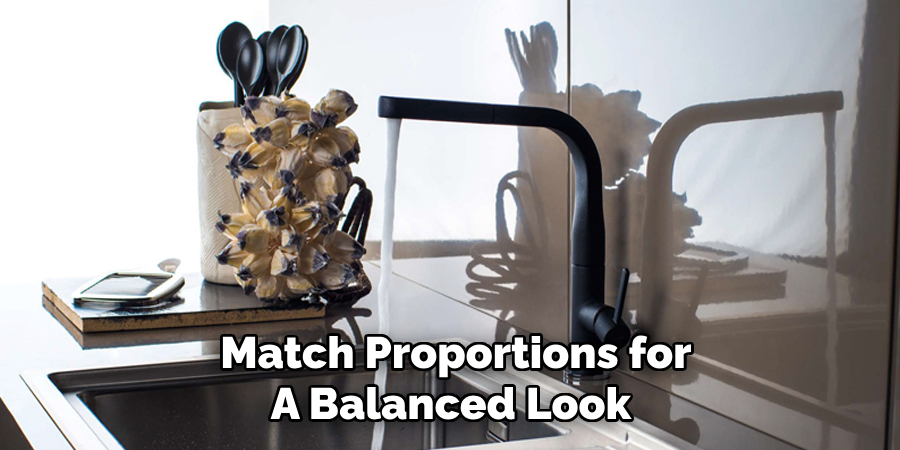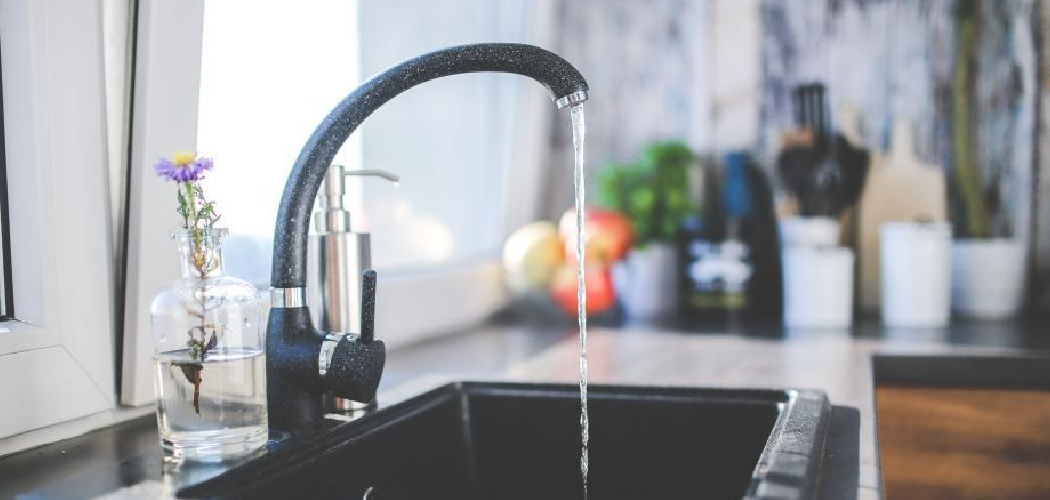Choosing the right tap to match your sink is an important step in achieving both functionality and style in your kitchen or bathroom. A well-matched tap not only complements the overall design but also ensures practical use and durability. This guide will help you how to match tap with sink for your space.

Sink Types and Configurations
The first step to matching a tap with your sink is understanding the type and configuration of your sink. Sinks come in various materials such as stainless steel, ceramic, granite composite, and more, each influencing the type of tap that would best pair with it. Additionally, the number of sink bowls—be it single, double, or even triple—affects the required reach and flexibility of the tap.
The mounting style is also crucial, as some sinks are undermounted, drop-in, or farmhouse-style, which dictate both the tap’s installation and aesthetic compatibility. Carefully assessing your sink’s features will help narrow down the ideal tap options for your specific setup.
Know the Different Tap Types
Understanding the various tap types available is essential for making an informed choice. Common options include single-handle taps, which allow for easy temperature and flow control with one lever, and double-handle taps, offering separate controls for hot and cold water. Mixer taps combine hot and cold water within a single spout, ensuring precise temperature adjustments.

Pull-out and pull-down taps are ideal for flexible use, featuring extendable spray heads for added convenience, particularly in busy kitchens. Touchless taps utilize motion sensors for hygienic, hands-free operation, while wall-mounted taps create a sleek, minimalist look. Each tap type caters to specific needs and preferences, making it important to match functionality with your lifestyle and design goals.
10 Methods How to Match Tap with Sink
1. Consider the Number of Tap Holes in the Sink
One of the most fundamental things to check when matching a tap to a sink is the number of pre-drilled holes. Sinks commonly have one, two, or three holes, and the tap you choose must be compatible. A single-hole sink pairs with a monobloc or single-lever mixer tap, while a three-hole setup allows for separate hot and cold handles with a central spout. Adapters exist, but matching your tap to the exact configuration avoids unnecessary modifications. Carefully inspect your sink before shopping—especially important for under-mount or ceramic designs where drilling new holes is impractical.
2. Match the Tap Height and Reach to Sink Size
Tap height and spout reach are crucial for practical use. A tall, curved tap might look elegant, but on a shallow sink, it could cause excessive splashing. Conversely, a short tap on a deep sink might limit space for washing large pots or hands. The reach—how far the spout extends into the sink bowl—should be enough to direct water comfortably into the center of the basin. Measure your sink’s depth and bowl size, and visualize where the tap’s water stream will land. Ensuring proportionality improves ease of use and prevents water mess on countertops.
3. Choose a Tap Style that Complements the Sink Design
Taps and sinks come in a wide variety of styles, from modern and minimalist to vintage and traditional. Matching them in design ensures a cohesive aesthetic. A farmhouse apron sink pairs beautifully with bridge-style or antique-look taps with cross handles. On the other hand, a sleek stainless-steel under-mount sink suits a streamlined, chrome-finish monobloc tap. The goal is visual harmony—let your sink set the tone, and pick a tap that enhances rather than competes with its design.

4. Align Tap Finish with Sink Material and Kitchen Fixtures
The tap’s finish should either match or thoughtfully contrast with the sink’s material. For example, brushed nickel or stainless-steel taps complement most stainless sinks, offering a seamless look. In contrast, matte black or brass taps can add bold accents against ceramic or granite sinks. Also, coordinate the tap finish with cabinet handles, drawer pulls, and other kitchen or bathroom hardware to maintain design continuity. Avoid mixing too many metal tones in the same space unless done with intention and balance.
5. Ensure the Tap’s Mounting Type Matches the Sink Configuration
Taps are either deck-mounted (installed on the sink or countertop) or wall-mounted. A deck-mounted tap requires appropriate flat space on or around the sink for installation, whereas wall-mounted taps need plumbing connections within the wall. If your sink has a built-in ledge or tap platform, a deck-mount tap is appropriate. But if your plumbing comes from the wall and you have a countertop basin, a wall-mount design will keep the space streamlined and elegant. Always match the tap’s mounting type with your sink’s setup and plumbing layout to avoid expensive rerouting.
6. Choose a Tap with the Right Water Pressure Compatibility
Not all taps function well with all plumbing systems. Some taps, particularly high-end mixers or those with fancy features like pull-out sprays or thermostatic control, require a high water pressure system. Check your home’s water pressure and ensure your chosen tap can function efficiently under those conditions. Your sink may be fitted with flow restrictors, aerators, or narrow waste pipes, all of which may affect pressure compatibility. A poorly matched tap can lead to weak water flow or dripping spouts, even when installed perfectly.
7. Account for Tap Functionality Based on Sink Usage
Think about how the sink will be used and choose a tap that enhances that experience. In a kitchen where washing large pans is common, a high-arched or pull-out tap works well. For a bathroom hand basin, a small single-lever mixer tap may be sufficient and more appropriate. Double-basin sinks benefit from swiveling spouts, while compact sinks in cloakrooms or powder rooms pair better with short, space-saving taps. The ideal tap will add functionality without overwhelming or underdelivering for your daily routine.
8. Match Proportions for a Balanced Look
Scale is a subtle yet important factor in matching a tap with a sink. A tap that’s too bulky for a petite basin will look overbearing, while a tiny tap on a large sink can appear awkward and ineffective. Aim for proportional harmony—a large farmhouse or Belfast sink deserves a tall, traditional-style tap, while a compact rectangular basin looks better with a short spout or waterfall tap. Always compare measurements when shopping to create a visually and functionally balanced result.

9. Confirm Tap and Sink Are Compatible with Your Countertop Thickness
When installing a deck-mounted tap, the thickness of your countertop or sink deck matters. Some taps come with shorter mounting shanks that may not fit through thick granite or composite countertops. Before purchasing, check the tap’s maximum mounting depth and compare it with your sink or counter’s measurement. If there’s a mismatch, look for taps with extended shanks or consider mounting directly on the sink instead of the counter. Ensuring this compatibility from the start will save time, tools, and installation frustration.
10. Consult Brand-Specific Pairings for Guaranteed Compatibility
Many tap and sink manufacturers offer compatible product lines or pairings specifically designed to work together. Brands like Blanco, Franke, Grohe, and Kohler often produce both sinks and taps, providing guidance on the best combinations in terms of style, finish, and fitting. Reviewing their pairings can give you confidence in aesthetics, installation, and performance. Even if you mix brands, using well-reviewed and tested matches can make installation easier and more reliable.
Things to Consider When Choosing a Sink and Tap Combination
- Material Compatibility: Ensure that the materials of your sink and tap complement each other not just in style, but also in durability. For instance, stainless steel taps pair well with stainless steel sinks, creating a cohesive and resilient design.
- Size and Proportion: The size of the tap should be proportionate to the sink. A large tap with a small sink can lead to water splashing, while a small tap with a large sink may lack practicality.
- Functional Features: Think about specific features you may need, such as a pull-out spray, touchless operation, or water filtration systems, and check if they align with your sink design.
- Aesthetic Harmony: Choose styles and finishes that complement each other to create a unified look. Matte, brushed, or polished finishes can impact the overall aesthetic appeal of your kitchen.
- Installation Requirements: Always review installation guides and requirements for both the sink and tap to avoid complications. Consider factors like the number of holes in the sink and compatibility with water pressure systems.

By carefully considering these elements, you can ensure a functional and stylish sink and tap pairing that suits your kitchen’s needs and design.
Conclusion
Matching a tap with a sink involves more than color and shape—it’s a balance of style, size, performance, and installation logistics. With thoughtful consideration of hole configurations, water pressure, materials, and proportionality, you can create a seamless and efficient fixture pairing that enhances your kitchen or bathroom. These ten methods offer a roadmap to making confident choices, whether you’re starting fresh or upgrading a single component. So, there you have it – a quick and easy guide on how to match tap with sink.

